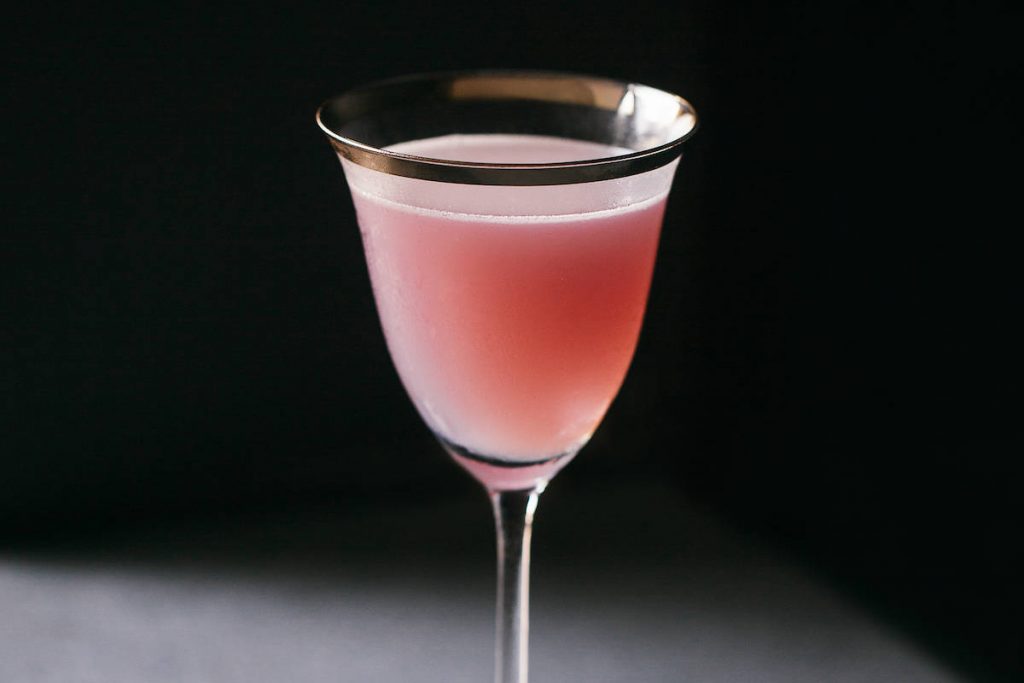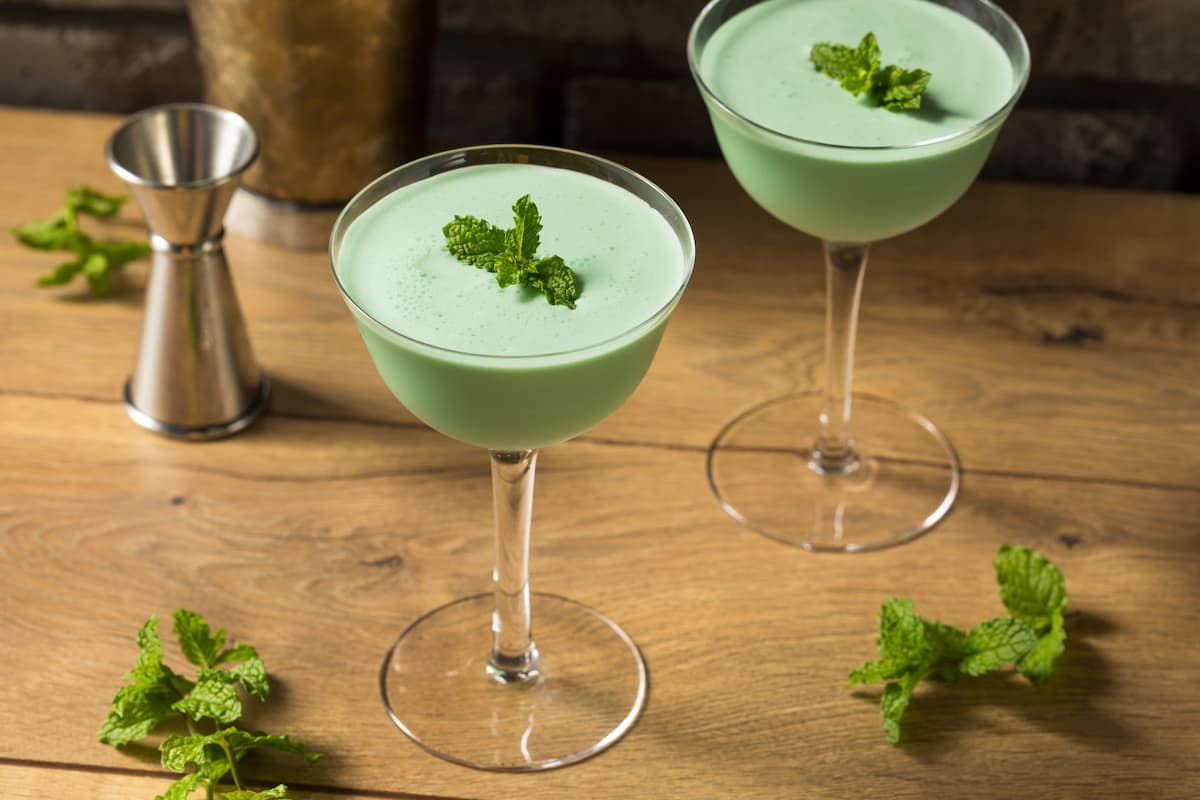A common expression is that we “eat first with our eyes,” meaning that good-looking food tastes better. So, too, do cocktails served in beautiful glassware with bold garnishes and brightly colored liquids. Also, they perform better on social media posts.
Your cocktails already have food coloring in them, whether you add it or not. Scotch whisky, most amaro, aged tequila, and rum typically have caramel coloring added to them. Bright liqueurs including Campari, Aperol, Midori, and blue curaçao employ natural or (usually) artificial colors to make them shine brightly. And other spirits are manipulated to remove color: Lightly aged rum and cristalino tequilas, for example, are barrel-aged and then filtered to clarity. Juices, bitters, sodas, and other mixers add color, too.
You can work with what you’re given, or have some fun amplifying and changing the colors of more of your drinks. The easiest things to color, of course, are those that start out clear. This includes spirits like vodka, gin, clear rums, and blanco tequilas, as well as simple syrup and water that you’ll carbonate at home or freeze into ice cubes.
Red Drinks
Historically, brazilwood and sandalwood were trees used for food and fabric colorings. The insect kermes was long used in Europe to color cosmetics and medicine, but this was largely replaced by cochineal, a scale insect still used in “naturally colored” products including strawberry yogurt, dried shrimp, and cosmetics. Cochineal was also used to color Campari until recently, though it has been replaced by artificial coloring in most of the world. (Some people, particularly children and those allergic to shellfish, are allergic to insect-based food colorings.)
Other products including Bruto Americano, Leopold’s Aperitivo, and Cappelletti still use cochineal coloring. You can buy powdered cochineal, but if you choose to do so please ensure it is designed for food use rather than for fabric dye.

Other coloring that you can use to make red cocktails includes dehydrated beet powder and hibiscus flower, or in liquid form try juices like pomegranate and cherry. Of these, the hibiscus probably adds the least amount of flavor and the most color.
Blue and Purple Drinks
Historical blue dyes include the mineral mixture ultramarine, the element cobalt, and of course indigo for clothing. Blue drinks may seem modern, but famous British chef/author Alexis Soyer actually created a blue sparkling lemonade with fruit flavors and cinnamon around 1850 (before the first cocktail book!) called Soyer’s Nectar.
By now, you’ve probably seen blue-purple-pink drinks made with butterfly pea flower tea. The tea is a natural pH indicator and in neutral pH liquids like water, ice, or simple syrup, it’s blue. When something acidic is added to it (and most cocktail ingredients are acidic), the color changes to a bright purple and then a pink color. (If you could find nontoxic ingredients that are high-pH, those would turn the liquid green and then yellow.) For an easy look at this trend, Empress 1908 Gin includes butterfly pea flower as one of its botanicals. Mix this bluish-purple gin with tonic, and you’ll get a bright pink Gin and Tonic.
You may be surprised to learn that blueberries do the same color-changing trick, to a lesser degree, as does ube, acai, and purple corn. And if you ever did the pH experiment with purple cabbage juice back in middle school, that’s the same thing. I don’t know about you, but I’m not about to start mixing with cabbage juice.
You can purchase dehydrated blue spirulina for coloring food and drinks that starts out vibrantly blue and changes to a delightful turquoise with acidic ingredients. Freeze dried dragon fruit powder also comes in a near-neon purple color, and was the stuff used to make those unicorn frappucinos at Starbucks a while back.

Beyond blueberries, blackberries, cherries, and to a lesser impact raspberries and strawberries can be infused into spirits and/or made into syrups that lend their color to drinks. You can use fresh or freeze dried versions of these fruits, or the least expensive option: frozen.
Yellow Drinks
Saffron has been used both as a spice and as a food coloring (and was once used in all sorts of medicinal beverages, supposedly against the plague) for millennia. It’s expensive but you don’t need much to color your drinks a bright golden yellow. Saffron probably gives Yellow Chartreuse its color, as well as Strega. Saffron brings with it a specific but mild tannic flavor that I don’t find to be very intrusive in drinks.
Annatto and turmeric are also both used for their yellow color, but both also carry a fair amount of earthy flavor with them. Turmeric has been trendy as a supposed health beverage in recent years, so perhaps you can find some liquid or dehydrated preparations of it mixology-ready.
Green Drinks
Green is the color of plants with chlorophyll, so it’s not hard to find in vegetable juice form. I have made many green cocktails—both alcoholic and nonalcoholic—with cucumber juice, which is not excessively savory (but also not excessively green). For less of a juicy impact, you can now find dehydrated pandan leaf and wheatgrass powders, as well as brilliant-colored green spirulina. Green teas like matcha can also work.
Black Drinks
Activated charcoal became a trendy coloring in “detox” food and cocktails, but there is a downside: If taken within a few hours of any medications, it can deactivate those medications. Thus, it is not recommended to serve it to other people without an adequate safety warning on drink menus, which can be a bummer.
Instead, you can use squid/cuttlefish ink (it’s a little salty), black currants (kind of a dark purple), or black sesame (that can end up more grey). Or to make a cocktail black or any other bright color, you can always use artificial food coloring. As noted in the intro, artificial food coloring is already in some of the spirits we know and love.




That is such a creative use of food coloring! I love the idea of creating vibrant, layered cocktails without sacrificing the flavor profile. It reminds me of the simple joy of mixing colors in art projects. If you enjoy playing with color like this, you might also like browsing the free and fun coloring pages at https://disegnidacoloraremondo.com/ – a great way to get artistic inspiration before whipping up your next colorful drink!